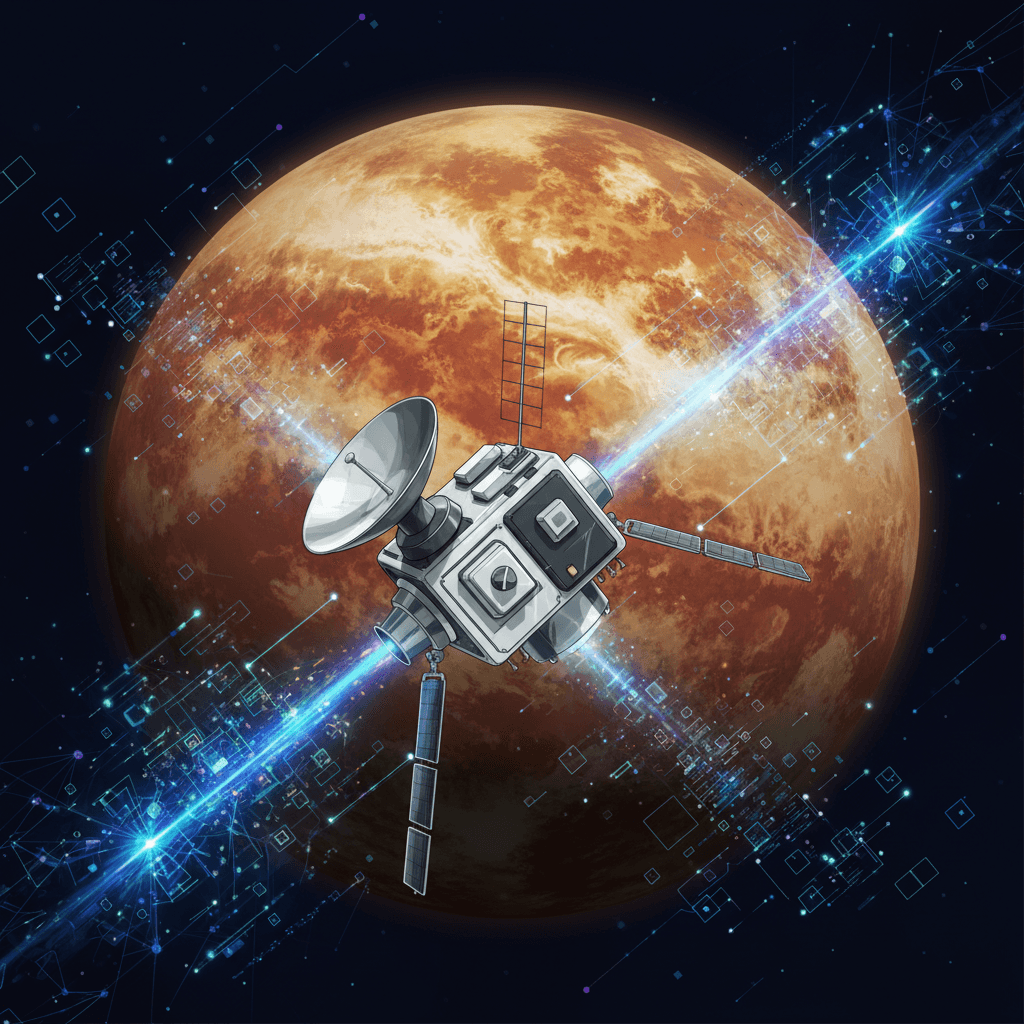Shukrayaan-1: India's Venus Quest Catalyzes Advanced AI Development
Unpacking Venus's atmospheric secrets, this mission also pushes AI and machine learning innovation for space and Earth.
September 11, 2025

In a significant stride for India's planetary exploration ambitions, the Indian Institute of Space Science and Technology (IIST) and the Indian Space Research Organisation's (ISRO) U R Rao Satellite Centre (URSC) have formalized a collaboration to develop a key scientific instrument for the nation's upcoming Venus Orbiter Mission, Shukrayaan-1. This partnership, solidified through a Memorandum of Understanding (MoU), tasks IIST with the design and development of a sophisticated payload known as the Retarding Potential Analyzer for Venus (RPA-V).[1] The instrument is designed to probe the enigmatic upper atmosphere of Venus, offering novel insights into its ionosphere and the complex interplay with the solar wind.[1] This collaboration not only underscores the growing synergy between India's premier space research institutions and its academic centers but also signals a deeper integration of advanced data analysis techniques, positioning the mission to have significant implications for the artificial intelligence sector.
The Shukrayaan-1 mission represents India's next major leap in interplanetary science, following the historic successes of the Mars Orbiter Mission (Mangalyaan) and the Chandrayaan series to the Moon.[2][3] Sanctioned by the government with a targeted launch date of March 2028, the mission aims to conduct a comprehensive investigation of Venus from orbit for more than four years.[4][5] Often described as Earth's "twin" due to similarities in size and density, Venus has evolved into a hostile world with a crushing carbon dioxide atmosphere and surface temperatures hot enough to melt lead.[6][7] Understanding the runaway greenhouse effect that led to these conditions is a primary scientific objective, offering crucial data for modeling Earth's own climate evolution.[6][8] The orbiter, expected to be launched aboard a GSLV Mk II or LVM3 rocket, will carry a suite of instruments weighing approximately 100 kilograms.[9][6][4] These will include a high-resolution Synthetic Aperture Radar (SAR) to penetrate the dense clouds and map the planet's volcanic surface, along with infrared and ultraviolet imagers to study the atmospheric composition and dynamics.[2][10]
At the heart of the new agreement is the RPA-V payload, an instrument specifically designed to study the charged particles in the Venusian ionosphere. The development will be spearheaded by a team of faculty members at IIST, building on their prior success with similar instruments for Earth's ionosphere, such as the ARIS-1 and ARIS-2 payloads.[1] A Retarding Potential Analyzer works by measuring the energy distribution of ions and electrons, providing critical data on the plasma environment. For Venus, this means characterizing the structure and dynamics of its ionosphere and understanding how it is shaped and eroded by the constant stream of charged particles from the Sun, known as the solar wind.[1] This interaction is particularly compelling at Venus because, unlike Earth, the planet lacks a global magnetic field to shield its atmosphere. The data gathered by RPA-V will be instrumental in answering long-standing questions about atmospheric loss on non-magnetized planets, a key area of comparative planetology.
The vast and complex datasets expected from the RPA-V and other Shukrayaan instruments present a fertile ground for the application of artificial intelligence and machine learning. ISRO has been increasingly integrating AI into its missions, utilizing it for critical functions such as spacecraft health monitoring, autonomous navigation, and efficient analysis of scientific data.[11][2] During the Chandrayaan-3 mission, for example, AI-powered algorithms played a role in the lander's hazard detection and avoidance system, ensuring a safe touchdown on the lunar surface.[12] The data from the Venusian ionosphere will be characterized by immense volume, high dimensionality, and intricate, non-linear patterns reflecting the turbulent interaction with the solar wind. Manually sifting through this data to identify significant events, classify plasma phenomena, or detect subtle correlations would be a monumental task. This is where machine learning algorithms excel, capable of identifying patterns and anomalies in large datasets that might be missed by human observers.[13][6] AI models can be trained to autonomously detect and classify different plasma regions, identify the signatures of solar storms impacting the atmosphere, and forecast ionospheric weather conditions around Venus.[5][7]
For the AI industry, this collaboration represents a significant opportunity and a challenging new frontier. Developing robust AI models for planetary science requires specialized expertise in handling noisy, high-dimensional time-series data from unique environments. The data from RPA-V will necessitate the development of sophisticated neural networks and deep learning techniques to clean, process, and interpret the ion and electron energy spectra.[9] This can drive innovation in several areas of AI, including automated feature extraction, anomaly detection, and predictive modeling for space weather applications.[9][14] Furthermore, the constraints of space missions, such as limited downlink bandwidth, are pushing the development of onboard AI, or edge AI, where data is processed and prioritized on the satellite itself.[9][15] AI algorithms could intelligently decide which data from RPA-V is most scientifically valuable and should be transmitted back to Earth, optimizing the mission's scientific return.[9] The techniques and algorithms developed for Shukrayaan-1 could find applications in a wide range of other fields on Earth that deal with complex sensor data, from geophysical exploration to industrial process monitoring.
In conclusion, the partnership between IIST and URSC to build a critical payload for the Shukrayaan-1 mission is a landmark event for Indian space science, promising to unravel the secrets of Venus's atmosphere. It highlights a strategic move to leverage the specialized expertise within India's academic institutions for cutting-edge space hardware development. Beyond its immediate scientific goals, the mission is poised to be a powerful catalyst for the advancement of artificial intelligence in India and globally. The complex challenge of interpreting the data from our sister planet will undoubtedly spur the creation of innovative AI solutions, enhancing our ability to explore the cosmos and driving technological progress here on Earth.
Sources
[1]
[3]
[4]
[5]
[7]
[8]
[10]
[11]
[12]
[13]
[14]
[15]